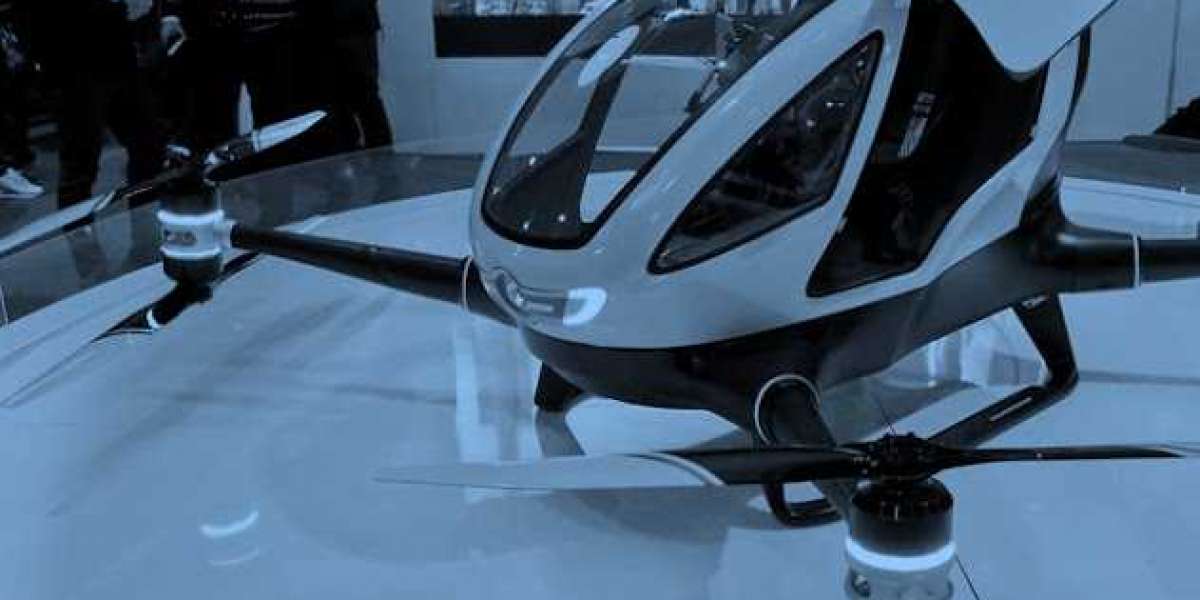The global electric VTOL (eVTOL) aircraft market is estimated to reach $700.5 million in 2032 from $27.5 million in 2023, at a growth rate of 38.2% during the forecast period 2023-2032. The growth in the global electric VTOL (eVTOL) aircraft market is expected to be driven by the increasing number of smart cities and growing need for sustainable transportation.
Read Report Overview: Electric VTOL Aircraft Market
This study covers over 190 (eVTOL) aircraft manufacturers across the globe. This study has segmented the electric VTOL (eVTOL) aircraft based on the design, range, use case, energy source, mode of operation, and components. After careful inspection of the product portfolios of the 190 eVTOL developers, the eVTOL aircraft design has been categorized into four types, namely, lift and cruise, tiltrotor, multicopter, and ducted vector, based on the design and operation type.
The major driving factors that help the market to grow drastically are growing demand for eVTOL aircraft for commercial applications, smart city initiatives, runway-less (rooftop-to-rooftop) platforms, increasing environmental concerns and energy impacts, increasing endurance for the regional connectivity, increasing need for efficient transportation and logistics, integrating automation and artificial intelligence into the eVTOL aircraft. However, a few challenges affect the market, such as technological constraints, limitation of the energy density of lithium batteries, traffic management for eVTOL aircraft, certifications, government regulatory framework, infrastructural challenges, and privacy and safety concerns.
The global electric VTOL (eVTOL) aircraft market is observing rising investment across all the platforms, which drives the investments across the ecosystem, such as ground infrastructure and battery technology. The major challenge in operating eVTOL aircraft is the lack of battery technology. The batteries that are used currently are lithium-ion, lithium-sulfur, and lithium phosphate, which are insufficient to provide power for long-range. In addition, the energy density of the lithium battery is low for eVTOL aircraft. Moreover, the regulation for operating the eVTOL aircraft in urban areas and developing the vertiports is still in the development stages, which further delays the eVTOL aircraft from entering the market.
Recent Developments in the Global Electric VTOL (eVTOL) Aircraft Market
- In July 2022, Lilium N.V. collaborated with Diehl Aviation to design and develop Lilium Jet’s cabin, and it acts as an integrator and manufacturer for interior components.
- In June 2022, Eve Holding, Inc. signed a letter of intent with Kenya airway's subsidiary, Fahari Aviation, to deliver 40 eVTOLs aircraft. As per the agreement, the companies jointly study through a working group to develop and scale up the UAM market and business model for people and cargo eVTOLs operations in Kenya. The project is expected to be delivered in 2026.
- In March 2022, Eve Holding, Inc. signed a strategic partnership with Acciona to develop a global and sustainable urban air mobility ecosystem. According to the partnership, Acciona would invest $30 million upon the consummation of Eve’s business combination with Zanite Acquisition Corp. and join the group of strategic investors that supports the development of Eve's business plan.
- In January 2022, Wisk Aero secured $450 million from The Boeing Company to further advance the development of Wisk’s sixth generation eVTOL aircraft. It also supports the company as it enters an intensive growth phase to prepare for the launch of scale manufacturing.
- In September 2021, Urban Aeronautics secured an investment of $10 million from unidentified private investors from the U.S., Brazil, and Israel. The investment would be used for further development and testing of the CityHawk eVTOL.
Get Free Sample: https://bisresearch.com/requestsample?id=1289type=download
Competitive Landscape
The competitive landscape of the electric VTOL (eVTOL) aircraft market consists of several organic and inorganic strategies followed by the key players to increase their market share. The strategies include product innovations, contracts, partnerships, acquisitions, and business expansions, among others.
Some of the key players in the electric VTOL (eVTOL) aircraft market include Wisk Aero LLC, Eve Holding, Inc., Joby Aviation, Lilium N.V., Beta Technologies, Vertical Aerospace, Volocopter GmbH, and EHang. These companies are aiming for a wide range of partnerships, collaborations, agreements, and contracts to expand their operations and increase their market presence globally to generate revenues and attract new customers.



